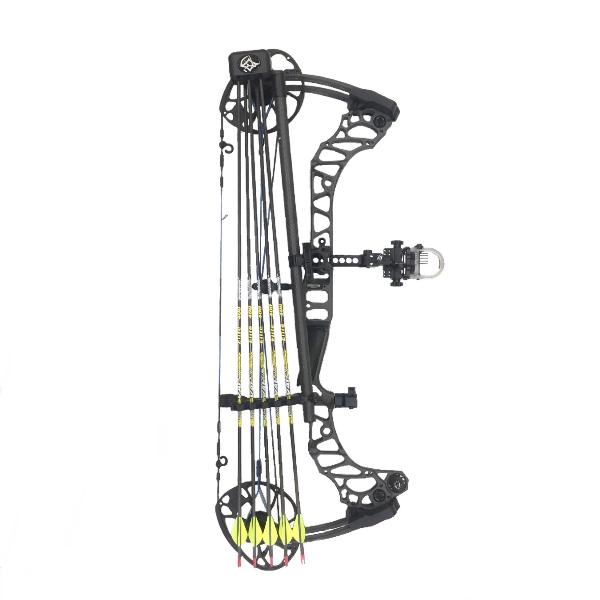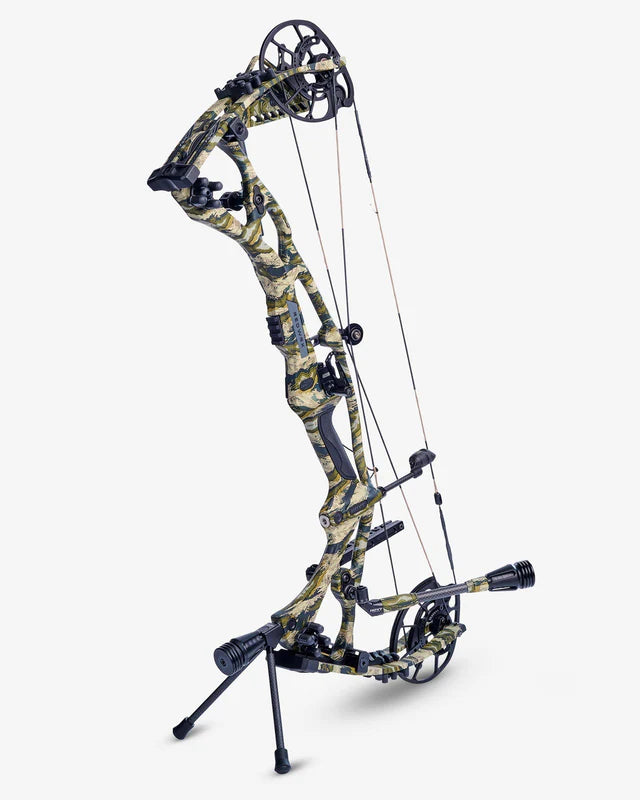Master the Art of Archery: Understanding the Significance of a Stabilizer in Your Configuration
Whether one is a skilled archer or just beginning their journey, the significance of a stabilizer in their configuration can not be overemphasized. By comprehending the advantages of using a stabilizer, thinking about the best factors when selecting one, and appropriately installing and changing it, archers can elevate their abilities to new heights.
The Duty of a Stabilizer in Archery
A stabilizer plays a vital role in archery by enhancing equilibrium and decreasing resonances throughout the shot. When an archer draws the bowstring and launches it, there is a transfer of energy that can create the bow to shake. These resonances can adversely impact the precision of the shot. However, a stabilizer assists to counteract these vibrations by dissipating the energy and absorbing.
One of the primary benefits of a stabilizer is its capability to enhance equilibrium. The weight of the stabilizer assists to distribute the weight uniformly, lowering the pressure on the archer's arm and enhancing stability.
In addition to balance, a stabilizer additionally helps to reduce torque. The weight and layout of a stabilizer counteract this turning, making sure a much more consistent and accurate shot.
Benefits of Utilizing a Stabilizer
The utilization of a stabilizer in archery uses many benefits that boost an archer's performance and total capturing experience. First of all, a stabilizer aids to lessen the resonances created upon release of the arrow. These vibrations can trigger the acquiesce torque or spin, causing imprecise shots. By taking in and dampening these resonances, the stabilizer boosts the security of the bow, enabling even more exact and regular shots.
Secondly, a stabilizer helps to balance the bow by adding weight to the front end. This weight circulation counteracts the all-natural propensity of the acquiesce tip onward upon launch, minimizing the amount of motion and boosting the archer's capacity to maintain goal on target.

Lastly, a stabilizer can also serve as a shock absorber, lowering the shock and recoil experienced upon launch. This not just enhances the comfort of capturing however likewise decreases the risk of injury or stress on the archer's body.
How a Stabilizer Improves Accuracy
Enhancing the accuracy of an archer's shots, a stabilizer plays an important function in enhancing general performance. archery stabilizer. By adding security to the bow, a stabilizer helps minimize the unwanted motion and vibration that can occur during a shot. This reduction in movement allows the archer to preserve a constant goal, leading to even more accurate and regular shots

In addition, a stabilizer assists to moisten resonances that happen upon release. These resonances can trigger the acquiesce drink, impacting the arrow's trajectory and accuracy. By taking in and dissipating these resonances, a stabilizer helps to maintain the bow's security and make sure a exact and smooth shot.
Furthermore, a stabilizer can additionally assist in stabilizing the weight distribution of the bow (archery stabilizer). By including weight to the front of the bow, a stabilizer aids to balance the weight of accessories, such as quivers or views, which might be affixed to the bow. This balanced weight distribution aids the archer keep a controlled and steady shooting setting, leading to enhanced accuracy
Factors to Think About When Choosing a Stabilizer
When choosing a stabilizer for your bow, it is important to consider a number of variables that will add to its total efficiency and suitability for your private capturing style. The initial variable to consider is the size of the stabilizer. Stabilizers can be found in different sizes, varying from brief to long. Longer stabilizers generally give much more stability and equilibrium, however they can additionally be larger and extra tough to maneuver. Much shorter stabilizers, on the various other hand, supply far better ability to move however might compromise some stability.
Another variable to think about is the weight of the stabilizer. The weight of the pop over to this web-site stabilizer can influence the equilibrium of your bow. A larger stabilizer can aid to reduce resonances and enhance security, leading to a steadier shot. Nonetheless, a lighter stabilizer may be favored by shooters that focus on ability to move and rate.
Some stabilizers have adjustable functions, such as flexible length or adjustable weights, which permit you to personalize the stabilizer to your details requirements. Carbon fiber stabilizers are lightweight and long lasting, while aluminum stabilizers offer an equilibrium between weight and rigidity.
Last but not least, it is important to consider your capturing design and preferences. Various stabilizers might work far better for sure shooting styles, such as target shooting or searching. It is recommended to talk to seasoned archers or professionals to determine which stabilizer will finest match your individual demands. Overall, thinking about these variables will certainly help make certain that you choose a stabilizer that improves your shooting experience and improves your precision.
Tips for Effectively Adjusting a stabilizer and setting up
Longer stabilizers offer more stability however can be much less manoeuvrable, while shorter stabilizers use increased maneuverability yet might compromise stability. As soon as you have actually selected the suitable length, attach the stabilizer to the bow using the provided mounting equipment. Guarantee that the stabilizer is safely secured and straightened with the bow's riser.
After installing the stabilizer, it is necessary to make changes to achieve the desired balance and shot uniformity. Start by readjusting the weight circulation along the stabilizer. This can be done by including or removing weights from the stabilizer's weight system. Explore different weight setups to find the equilibrium that functions best for you. Furthermore, think about readjusting the angle of the stabilizer to fine-tune the shot. A mild forward or backwards tilt can impact the bow's balance and exactly how it reacts during the shot.

Conclusion
To conclude, a stabilizer plays a crucial duty in archery by enhancing accuracy and decreasing bow torque. By adding weight to the bow, it helps to balance and support the shot. When picking a stabilizer, elements such as weight, material, and size must be thought about to meet individual demands. Proper installation and change of the stabilizer are also necessary for ideal performance. Mastering the usage of a stabilizer can greatly enhance the archer's skill and accuracy.
Furthermore, a stabilizer can likewise assist in stabilizing the weight circulation of the bow. By adding weight to the front of the bow, a stabilizer assists to balance the weight of devices, such as sights or quivers, which may find more information be attached to the bow. Some stabilizers have flexible features, such as flexible length or flexible weights, which allow you to customize the stabilizer to your certain needs. Carbon fiber stabilizers are long lasting and lightweight, while light weight aluminum helpful site stabilizers provide an equilibrium between weight and strength.
Longer stabilizers supply more stability yet can be less manoeuvrable, while shorter stabilizers use enhanced ability to move but may give up stability.